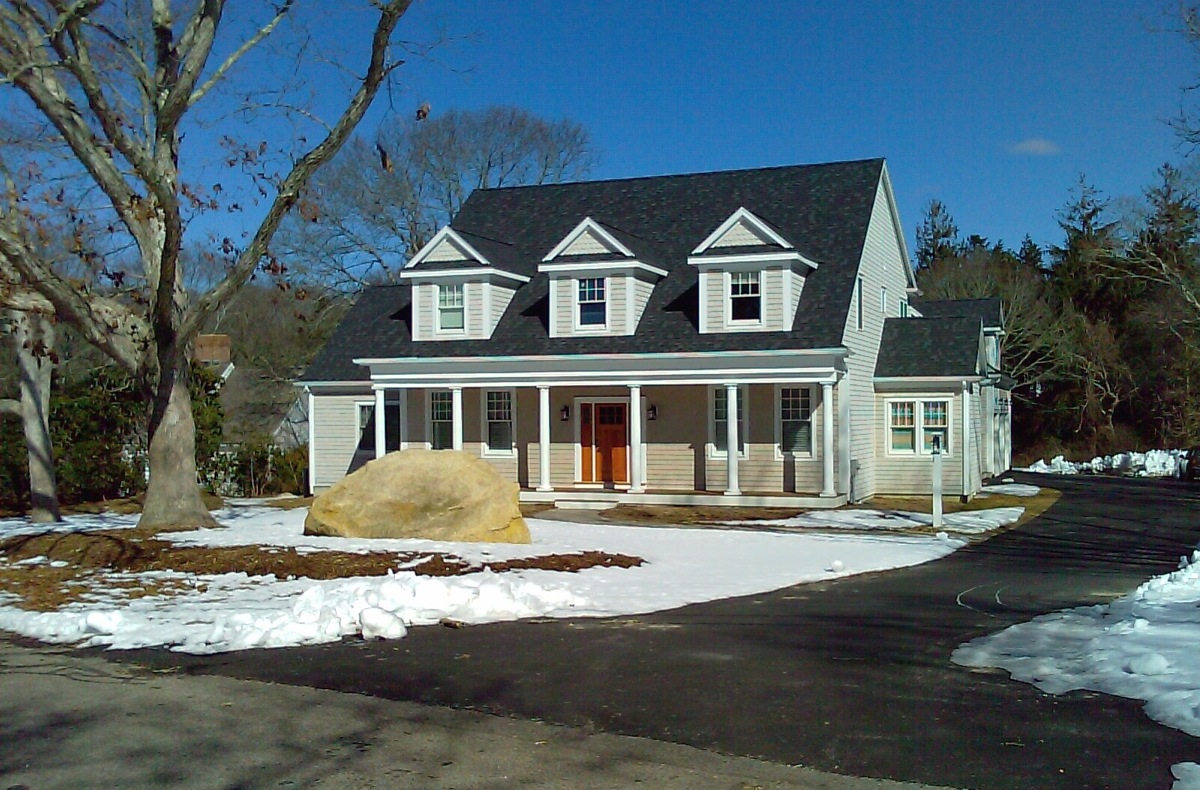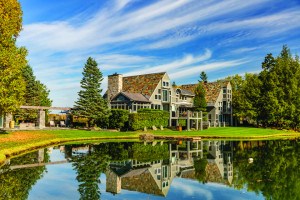10 Questions with Landscape Designer Nancy Vargas

Image provided by Le Jardin Blanc.
Nancy Vargas, owner of the floral design-turned landscape design company Le Jardin Blanc, is fresh off a busy fall and winter of designing, teaching, and lecturing. This time of year, she’s dedicating most of her time to putting landscape projects of every scale into the ground. Landscape design is more complicated than you may imagine, but Nancy’s dual background in landscape and architecture puts clients in capable hands.
Here, Vargas takes the time to chat with us about her work, what to keep in mind when planting, and how gardens will automatically “increase quality of life.”
1. You started off as a floral design company. How does that influence your work?
The focus of my floral design work has always been sort of monochromatic [and] textural. I like to create a color scheme and then, within that color scheme, deal with materials of various scales. You’ll have things that are tiny and pale in the color…versus larger things that are more vibrant. This creates sort of a rhythm within the composition. I do this in my landscapes, too. I definitely don’t create landscapes that are every color of the rainbow.
2. When did you open the The Flower School by Le Jardin Blanc? Were you always interested in teaching?
In 2002, right off the bat. As soon as the business got big enough to have assistants working for me, they [had] to learn the Le Jardin Blanc way of doing things so that the work [was] consistent and all of the same quality. I had such an amazing experience with several of the young people, who were assistants of mine. I just loved teaching, so I started doing some speaking engagements for local garden clubs.
I’ve always been a huge fan of Tower Hill Botanic Garden in Boylston/Worcester area so I started to get involved with them. Then, my own town, [Southborough], has a wonderful recreation department…so I started to say, “Hey, do you have classrooms open? Is there a market for this kind of thing?”
3. Aside from teaching flower design, what does someone in landscape design do in the winter?
Well, you know what you should be doing in the winter time? Designing gardens! The winter time is the optimum time to design a landscape. Once the first frost happens, [that] is the time to start thinking about your garden for next year…It’s fresh in your mind as to what worked or didn’t work, what bloomed or what didn’t bloom, [and] you can still somewhat see where your plants are located.
When the first flush of spring happens, the clock is ticking as to how much time you have to put new plants in the ground. You don’t want to put new plants in the ground in the middle or end of June. The weather is getting so hot and it puts an enormous amount of stress on the plant because it’s got a little root system. So [if you start in June,] you wind up with three weeks to get a garden designed, and that’s really not enough time to give people a chance to think about what they want and go through all of the various processes you need to go through before you stick a plant in the ground.
4. What needs to happen before you can begin planting?
Usually, the first obligation of the client is to see to it that the designer has a prop plan that shows all of the utilities and so forth. With newer homes, it’s usually not difficult, but for older homes it [can be] very difficult. Sometimes that’s the first stage of the project, going out with a crew and doing a very detailed site survey…laying out your property lines, putting stakes in the ground. Let’s say you want to put in a hardscape like a pavilion, shed, or portico. Most zoning bylaws have restrictions for what they call setbacks so you may not be allowed to build a permanent structure within 10 feet of a property line. You need to know that before you start to build a structure. That’s an educational process that is absolutely imperative at the beginning of the project or you’re gonna get people in big trouble.
5. What other considerations come from a prop plan?
In many locations in New England, there is not a public septic system. A lot of homes have individual septic systems, so you need to know where that septic system is and what you can or can’t plant near or on top of it.
There are the utility lines, you need to identify where the utility lines are running [so] that you don’t plant on or near it in a dangerous way. There are certain plants that have very moisture-seeking root systems—like a willow—that you do not want to plant near your main water lines. They will find the water line, and they will break your water pipe and go into your plumbing system.
Here in New England [when] we [install] hardscape [it needs to] lie deep in the ground [for]…our freeze-thaw cycle every year. We need to go down between 24-30 inches. Well, once [you] go that deep, you’re going near your gas line, and in some cases, your buried electrical conduits. So there are lots of things you need to know before you start planning.
6. How is your architecture license beneficial?
Very few things in life are not interrelated, having all of that knowledge is a very useful thing in practicing landscape design, having that knowledge of the infrastructure. … Before you’re even at the point of combining plants, you’re creating outdoor spaces. That’s the architectural part of it, whether it’s a wall or a hedge. It’s creating space and then when you overlay the floral design it all comes together.
7. How is soil a factor?
People think that dirt is dirt, but it really isn’t. Your soil structure and composition [are] very important…If you’ve got clay, you’ve got bad drainage. If you’ve got sand, you’ve got too much drainage where the soil isn’t holding water long enough to help your plants. If you add organic matter to that, you’re improving both the structure and the composition of your soil. What you generally do is take soil samples and…you can send in a number of samples to the state. They will come back and tell you about your pH level, which is very important, and the amount of organic matter, that kind of thing. There are also tests for drainage, too.
8. What sustainability and environmental practices do you bring to your work?
The world is coming around to sustainability practices. As a landscape designer and a gardener myself, I try to do absolutely everything possible to keep things environmentally friendly. I do not use pesticides. On my own property, I stay away from fungicides as much as humanly possible and I’ve never had to use any, thank goodness. I cistern water because water is an incredible topic for environmentalists right now.
But then you have a client who, you know, is in charge of their own part of the world, and you need to do as much as possible to educate them as to what they’re doing and how it impacts the greater environment. If you can take someone who really doesn’t have [that] on their radar and bring them along as far as possible, that’s a victory. It’s part of where the world goes wrong with environmentalism. It’s not an all-or-nothing proposition.
Usually, people are much more environmentally conscious these days. Planting the right plants and getting people away from gigantic golf course lawns, having them think about water re-usage, and composting… In a city environment, it’s hard. How can you expect people to compost if they don’t have the infrastructure to compost?
9. How do container gardens factor into your planning?
Containers are fabulous! They are great for anyone who doesn’t live in a place where they have a big plot of land. Containers are a manageable way to still have some beautiful seasonal interest near or in your home. The biggest mistake people make about containers is they fall in love with a particular plant and they put things that need sun with things that need shade, or things that take tons of water with things that take no water. A container is a little microsystem all of its own. You need to think about what you’re putting together.
10. How do you deal with unwelcome garden visitors?
This year, I’m planting an all-white vegetable garden…and I’m building a fence. You have to bury about 18 inches in the ground and then about four feet high to discourage the bunnies and groundhogs. The chipmunks and the squirrels will still be able to get in and out because obviously they can climb anything, but they don’t do much damage anyway. The deer will be able to jump it, but it’s full of so many things they’ll probably elect not to because they know they won’t be able to get out.
We have voles and they are the bane of every gardeners existence. They look like mice…and they go after all the yummy roots of your perennials….eat[ing] your perennial garden down to nothing. … [Voles] love living in stonewalls. A little bit of wadded up chicken wire in the holes of your stone wall will deter them. I always plant my bulbs in cages so that deters them, too.
Contact Nancy Vargas for landscape design projects, classes at her flower school, or lectures at your next garden club meeting. Le Jardin Blanc, Southborough. Info: 508-485-8445, lejardinblanc.com.
Below, check out before and after photos from Nancy Vargas:

Before. Image provided by Le Jardin Blanc.

After. Image provided by Le Jardin Blanc.

Before. Image provided by Le Jardin Blanc.

After. Image provided be Le Jardin Blanc.
This interview has been edited and condensed.


